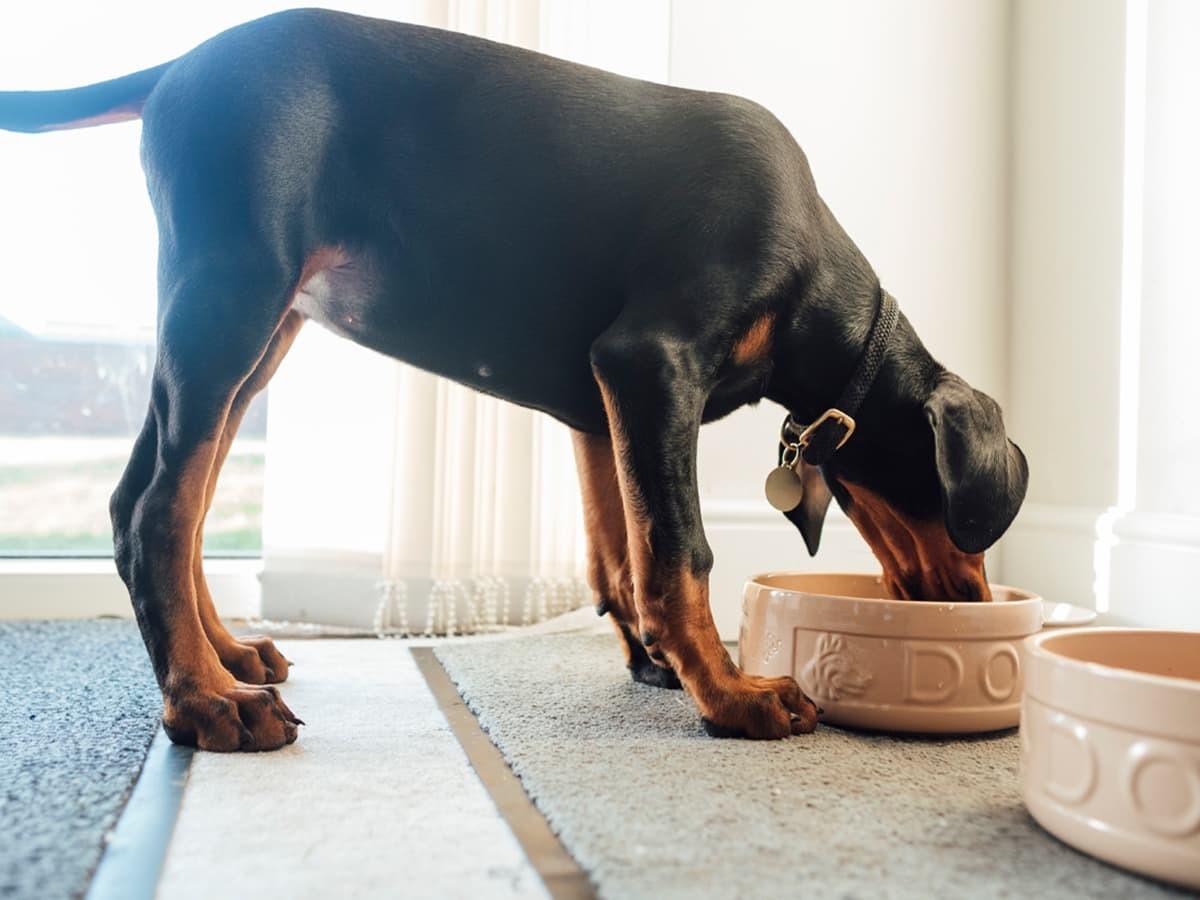Finding the right balance for your dog’s diet is crucial. There are all sorts of questions, most revolving around the question, “can my dog have this?” Asking that question before making dietary changes is crucial, which leads us to black-eyed beans.
Can your dog eat black-eyed beans? It turns out it can be a great addition to your pup’s diet. It is essential to know the various benefits to be had from black-eyed beans as well as some of the downsides.
Black Eyed Beans
What are black-eyed beans, anyway? They are a type of legume, which is a kind of edible seed that grows in a pod (much like regular peas). They kind of look like small green beans. They also have a natural, earthy flavor, which means that people either love or hate them.
Typically, people will cook them with onions and tomatoes, but they can be eaten fresh. Check your local grocery store, find their produce section, and there is a good chance that you will find black-eyed beans somewhere.
It is even possible to enjoy the juice. All you have to do is soak overnight and drain the liquid so that you have around a cup of black-eyed beans left. With a bit of water, salt, and a few ice cubes, blend it all up until it’s the consistency that you want.
Can Dogs Eat Them?
The good news is that, yes, dogs can eat black-eyed beans. They have a variety of nutrients in them that can be highly beneficial to dogs, namely fiber and protein. Before you go throwing them in with your pup’s meals, it is important to know a few things first.
Are There Any Benefits of Feeding Your Dog Black Eyed Beans?
There are a plethora of different benefits to giving black eyed beans to your dog. For starters, they are a great source of protein, folate, and fiber. All of them are required to create a balanced, healthy diet for your dog.
They also provide a lot of calcium, a necessity for preventing problems with their bones. Arthritis in particular can be a problem later on in life and more calcium can help prevent or prolong arthritis from becoming an issue. Black eyed beans also have a lot of iron, another necessary vitamin for dogs.
For dogs that have particularly sensitive allergies or stomachs, the fiber can be quite helpful. In addition, there are a number of antioxidants that help to fight things like cardiovascular disease, cholesterol buildup, aging, and even cancer.
Perhaps the best thing about black eyed beans is that you don’t need to give your dog a lot to experience the benefits that they offer. With a 16oz serving size, you can expect to
get roughly 18 grams of total fat and 210 calories, packing a wallop in such a small amount.
The Risks of Black Eyed Beans
While there are a number of positive health benefits to be had, there are definitely downsides to black-eyed beans as well. For starters, if you feed them too much, it can lead to regular and serious constipation. Even in the most modest of cases, constipation can be uncomfortable and eventually become dangerous.
The juice can also have a few serious implications. For one, the juice of black-eyed beans can be quite dangerous for dogs that are prone to seizures. They have a naturally high level of caffeine, which can result in the triggering of seizures. Make sure to consult your vet first; not everyone knows how susceptible their pet is to seizures, which isn’t the way to find out.
The caffeine itself is a problem for dogs. They aren’t meant to tolerate a lot of caffeine, and even in small doses, it can lead to convulsions. Anything more than a snack or treat here, and there could be potentially dangerous over the long term.
The fiber content can also become an issue if it gets to be excessive. Having fiber in their diets is a good thing, but too much of it can lead to them having issues with diarrhea. There are even some instances where chronic bowel problems occur, though those are rare. If anything, black-eyed beans generally help prevent bowel disorders.
For some dogs, black-eyed beans can be toxic. With any new food, be sure to introduce it in small portions. Make sure that you keep a keen eye on your dog, watching for any adverse reactions that may occur. If everything is fine, you can start giving them a little more. If they have a bad reaction, consult the vet immediately.
Finally, there is the chance that your dog may be allergic. It can be quite a shock to find out that your dog is allergic to something because you simply didn’t know. That is where the small portion sizes can really prove beneficial.
How to Give Your Dog Black Eyed Beans
If you are interested in giving your dog a boost of protein, fiber, and several essential vitamins, then black-eyed beans can become an option. Consulting your vet is optimal as they will tell you whether the change is a good one.
Should you go forward with the decision, make sure that you don’t give them black-eyed beans daily. At the most, it should be twice per week, and that is on the high end. Too many can lead to serious constipation, so keep their portions limited.
Never give your dog the water in which the black-eyed beans have been cooked. That is a natural laxative and can lead to some serious stomach problems for your dog and other problems for you. Save your buddy the pain and yourself the mess.
Your dog can have raw black-eyed beans, but only if they are fresh, peeled ones. At best, it should be a rare treat and not something that they should regularly get. Thanks to higher carbohydrate counts, it can lead to digestive issues and loose stool.
So long as you keep it occasional, usually as a treat, black-eyed beans should be a fine addition to your dog’s diet. The added boost of protein, fiber, and essential vitamins will go a long way toward ensuring that your dog is as healthy as it can be. Best of all, it is easy to prepare, so no major hassles are involved.
Final Thoughts
Like many other types of food, black eyed beans can be a good thing in moderation. Adding it in as a once-or-twice-per-week treat can be a great way to provide fiber, protein, and calcium for your dog. Just make sure that you don’t overdo it as it can lead to constipation, among other things.
What different vegetables can your dog eat? Thankfully, there are a plethora of options besides black eyed beans. You can give them cucumbers, lettuce, pickles, celery, broccoli, carrots, cauliflower, peppers, asparagus, and so much more.
Beans can be a great source of fiber and protein, both essentials in the diet of any dog. Making sure that you are meeting the dietary demands of your dog is important, and black eyed beans can help you achieve that goal. Which beans can your dog eat? Black eyed beans are a fine option, but what if you want to try other things? The good news is that dogs can have garbanzo beans, lima beans, black beans, pinto beans, green beans, and more.

With 10 years of experience as a pet parent, I aim to empower pet owners with insights into pet insurance and maintaining their pet's well-being. I aspire to be a trusted source, combining knowledge with a commitment to the welfare of our beloved pets.
Saylor, April. "Can Dogs Eat Beans?" PetMD, 09 May 2023, https://www.petmd.com/dog/nutrition/can-dogs-eat-beans.
Pet Expert Team. "Can Dogs Eat Beans? A Guide to Safety." Purina, 28 Jul. 2025, https://www.purina.com/articles/dog/feeding/can-dogs-eat/beans.
Leeson, Janelle. "Everything You Need To Know Before Giving Your Dog Beans." The Dog People by Rover, 13 Feb. 2025, https://www.rover.com/blog/can-dogs-eat-beans/.
The information presented in this article is for educational and informational purposes only and does not constitute or substitute for the advice of your veterinarian.












